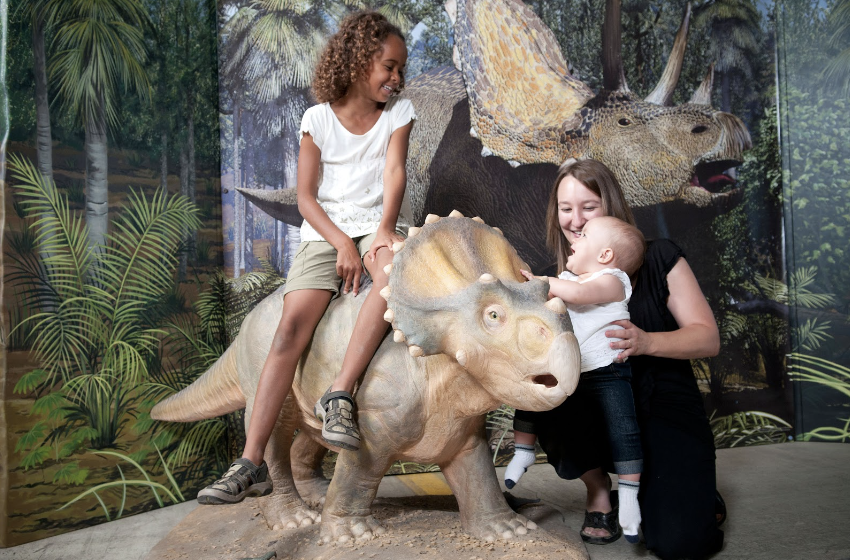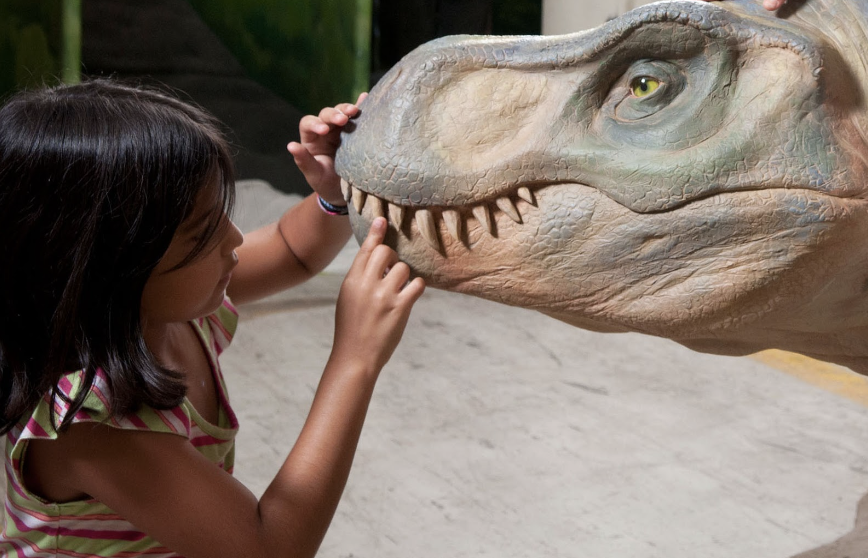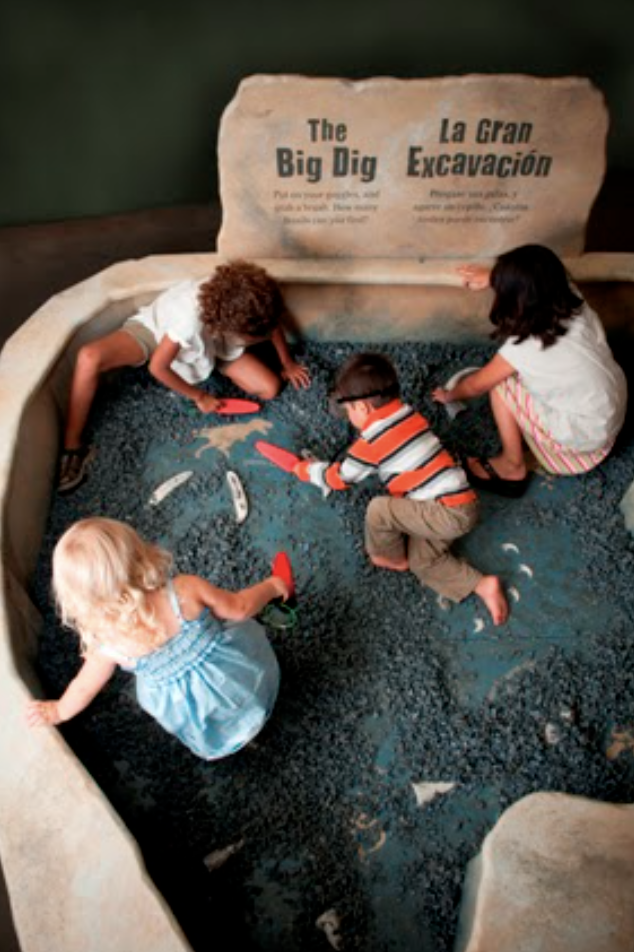Everything you didn’t know about polar dinosaurs
May 15, 2023
by Lindsey Flannery

When you think of dinosaurs, do you think of them lumbering around wet, tropical, swampy areas? If so, it’s because that’s how dinosaur habitats are usually depicted in books and on TV. And it’s true, scientists believe many dinosaurs lived in tropical or temperate climates, because of what they know about the climate during the time period when dinosaurs lived.
The Mesozoic Era, which lasted from about 252 million to 66 million years ago and spanned the entire history of dinosaurs living on Earth, was marked by long periods of warmth and high levels of atmospheric carbon dioxide. Through a variety of methods, like analyzing isotopes (found in fossils) that are sensitive to temperature changes, scientists can create models of past climates.1 These models show that in general, Earth was warmer when dinosaurs lived.
A mysterious (early) extinction
However, it wasn’t continuously warm for the entire 200 million year-long Mesozoic Era. This Era is split into the consecutive Triassic, Jurassic and Cretaceous periods. Toward the end of the Triassic period, around 202 million years ago, there was an episode called the Triassic-Jurassic extinction event. A chain of massive volcanic eruptions cooled the planet dramatically, killing more than 75% of species on land and in the oceans.2
However, we know that dinosaurs survived long past this extinction event. In fact, most of the well-known dinosaurs lived much later -- T. Rex and Triceratops lived during the late Cretaceous period, and were among the last of the dinosaurs to walk the earth.
So, how did dinosaurs survive the dark, freezing cold Triassic-Jurassic extinction event and go on to thrive for another 135 million years?
Because some of them had already adapted to live in cold climates.
The evidence for polar dinosaurs
Fossil evidence has emerged from around the world that places dinosaurs in locations that would have experienced freezing temperatures at the time that dinosaurs lived there. In a particularly fascinating discovery in the Junggar Basin in Northwest China, dinosaur footprints in the sandstone and siltstone around an ancient lakebed prove the dinosaur’s presence at a location that was geographically within the Arctic Circle roughly 202 million years ago.1
Scientists proved that the lake would freeze through “ice-rafted debris,” which is pebble-shaped debris carried by lake ice from the shore into the center of the lake, where the ice melted in the summer and deposited the debris.
So, we know that even though the Earth was generally warmer during the Mesozoic Era, the Junggar Basin evidence, along with other evidence from Alaska, Antarctica and Canada, shows that freezing cold weather did happen at the poles, and that dinosaurs lived there at those times.
Fossil evidence suggests that dinosaurs living in polar regions were specially suited to live there. They may have had feathers for insulation, or especially thick skin, to withstand the freezing temperatures and high wind. Some scientists now believe that some dinosaurs may have been warm-blooded,2 even though dinosaurs have long been believed to be cold-blooded like other reptiles. Even if not fully warm-blooded, they may have had a different kind of metabolism altogether than modern animals that allowed them to survive the freezing weather.
These adaptations paved the way for the cold-adapted dinosaurs from the poles to emerge from the Triassic-Jurassic extinction event, and dominate the Jurassic (around 201 million to 145 million years ago).1 While big, unfeathered vertebrates (dinosaurs and other large animals) succumbed to freezing temperatures that reached the tropics, dinosaurs that were adapted to colder temperatures in the poles were able to survive.
Dinosaurs: Land of Fire and Ice exhibit

Evidence of polar dinosaurs exists throughout the age of the dinosaurs, into the Cretaceous period, which is the focus of the Dinosaurs: Land of Fire and Ice exhibit currently at Kidzeum.
Fossil evidence from Prince Creek Formation in Alaska’s Northern Slope shows that it was a habitat for polar dinosaurs during the Late Cretaceous Epoch.3 Fossils of Troodon and Edmontosaurus, the two dinosaurs on display in the Ice portion of the exhibit, have been found in the Prince Creek Formation.
Want to learn more about dinosaurs in the Cretaceous period, including both polar dinosaurs and their famous friends from warmer climates, like T. rex and triceratops? Check out Dinosaurs: Land of Fire and Ice, coming to Kidzeum May 27 through September 3, 2023. Learn more about the exhibit here.


Sources:
